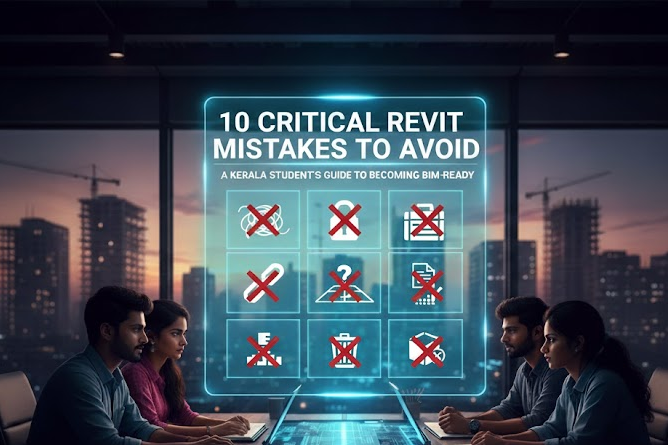
Author: Devika R
July 5, 2024
5 min read
Introduction:
Kochi, Kerala’s vibrant city, grapples with a recurring nemesis – waterlogging. From the devastating floods of 2018 to the relentless downpours of May- June 2024, the monsoon season exposes the vulnerabilities of the city’s drainage system. This case study delves into Kochi’s challenges and proposes a future-proof solution using Building Information Modeling (BIM) technology.
A History of Hardship:

- The 2018 floods remain etched in Kochi’s memory. Overflowing canals, submerged streets, and displaced residents painted a picture of urban distress. While recovery efforts ensued, underlying issues with the drainage system persisted.
- The 2024 monsoon season proved to be another test. Unprecedented rainfall overwhelmed the existing infrastructure, leading to waterlogging in low-lying areas like Edappally, Kakkanad, and Infopark.
- These recurring events highlight the urgent need for a comprehensive and sustainable solution to prevent future waterlogging and its devastating consequences.
The Drainage System Under Strain:

- Years of neglect have taken their toll on Kochi’s drainage network. Canals are choked with sediment, drains are undersized, and the overall capacity struggles to handle the increasing intensity of rainfall.
- Lack of comprehensive data on the existing infrastructure makes it difficult to identify critical bottlenecks and prioritize maintenance efforts.
- Disjointed planning and collaboration between different agencies managing the drainage system further hinder effective solutions.
BIM: Building a Resilient Future

BIM technology offers a powerful tool to transform Kochi’s drainage system. Here’s how BIM can usher in a new era of monsoon preparedness:
- Data-driven Design and Planning:
- A comprehensive survey will capture the current drainage network (canals, drains, manholes) in a detailed 3D BIM model.
- Terrain data, including slopes and elevations, will be integrated to understand water flow patterns across the city.
- Historical rainfall data from 2018 onwards will be analyzed alongside real-time data to predict future water flow scenarios during various rain intensities.
- Optimizing Drainage Efficiency:
- BIM software will be used to simulate various drainage network designs, including pipe sizes, slopes, and pump capacities.
- The model will be used to identify bottlenecks and optimize the design for efficient water flow during heavy rainfall events, incorporating lessons learned from past floods.
- BIM can also be used to integrate green infrastructure solutions like rain gardens and permeable pavements to reduce stormwater runoff.
- Collaborative Construction and Maintenance:
- The BIM model serves as a central platform for all stakeholders, including engineers, contractors, and utility companies, to collaborate seamlessly during design, construction, and maintenance phases.
- Clash detection within the model helps identify potential conflicts between drainage systems and other underground utilities before construction begins.
- The model facilitates efficient construction planning and scheduling, ensuring timely completion of the project.
- Long-term Sustainability:
- The BIM model will be transformed into a digital twin of the drainage system, enabling proactive maintenance and future upgrades.
- Sensor data on water levels and flow rates can be integrated with the BIM model for real-time monitoring and management of the system.
- This data-driven approach allows for preventive maintenance, reducing the risk of clogged drains and waterlogging incidents.
Conclusion:
Kochi’s fight against waterlogging is a continuous battle. By adopting a BIM-based approach, the city can build a future where the monsoons bring life, not devastation. BIM optimizes design, construction, and maintenance, fostering a collaborative and data-driven approach to drainage management. This comprehensive solution empowers Kochi to weather the storms and create a more resilient future for its citizens





